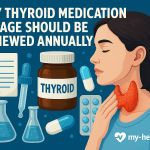This article is for informational purposes only and should not be considered medical advice. Always consult a healthcare professional for personal health concerns.
What Are Sleep Disorders?
Sleep disorders encompass a range of conditions that affect the ability to sleep well on a regular basis. They can disrupt your daily life, impacting your mood, energy levels, and overall health. Common sleep disorders include insomnia, sleep apnea, restless legs syndrome, and narcolepsy. Understanding these disorders is essential, as they can lead to more severe health issues if left untreated.
Common Types of Sleep Disorders
1. Insomnia
Insomnia is characterized by difficulty falling asleep, staying asleep, or waking up too early. This can lead to daytime fatigue and irritability. According to the National Institutes of Health (NIH), nearly 30% of adults report some symptoms of insomnia. The pathophysiology of insomnia often involves a complex interplay between psychological factors, such as anxiety and depression, and physiological factors, including disruptions in the sleep-wake cycle. Neurotransmitters like serotonin and norepinephrine can also play a role, as they influence mood and alertness. Did you know? Chronic insomnia can increase the risk of developing other health issues, such as cardiovascular disease and diabetes.
2. Sleep Apnea
Sleep apnea is a serious disorder where breathing repeatedly stops and starts during sleep. The most common type is obstructive sleep apnea, which occurs when throat muscles relax excessively. The CDC notes that around 25 million adults in the U.S. have obstructive sleep apnea. This condition can lead to fragmented sleep and reduced oxygen levels, resulting in increased cardiovascular risks and metabolic issues. The pathophysiology involves a combination of anatomical factors (like excess weight) and neurological control of the airway. Are you at risk? Risk factors include obesity, age, and a family history of sleep apnea.
3. Restless Legs Syndrome (RLS)
RLS is a condition that causes uncomfortable sensations in the legs and an uncontrollable urge to move them. Symptoms often worsen at night, disrupting sleep. According to the National Sleep Foundation, RLS affects about 10% of the population. The underlying mechanisms may involve dopamine dysregulation, which affects the brain’s ability to control movement. Additionally, RLS can be associated with iron deficiency and other conditions, making it important to investigate underlying causes. Have you noticed? Symptoms can sometimes improve with lifestyle changes or iron supplementation.
4. Narcolepsy
Narcolepsy is a neurological disorder that affects the control of sleep and wakefulness. People with narcolepsy experience excessive daytime sleepiness and sudden sleep attacks. The American Academy of Sleep Medicine estimates that narcolepsy affects about 1 in 2,000 people. This condition is often linked to a deficiency in hypocretin, a neurotransmitter that regulates arousal, wakefulness, and appetite. Curious about symptoms? Narcolepsy can also include cataplexy, a sudden loss of muscle tone triggered by strong emotions.
Causes of Sleep Disorders
Understanding the causes of sleep disorders is crucial for effective treatment. Various factors can contribute, including:
- Genetics: Family history can increase the likelihood of sleep disorders, suggesting a hereditary component. Studies indicate that sleep disorders can run in families, pointing to genetic predispositions.
- Medical Conditions: Chronic pain, asthma, and depression can disrupt sleep, as can conditions like diabetes and heart disease. For instance, individuals with chronic pain may find it difficult to find a comfortable sleeping position.
- Lifestyle Factors: Poor sleep hygiene, irregular sleep schedules, and high stress levels can lead to sleep issues. For example, shift work can disrupt circadian rhythms, making it hard to maintain a regular sleep pattern.
- Substance Use: Caffeine, nicotine, and alcohol can interfere with sleep patterns, making it difficult to fall asleep or stay asleep. It’s important to be mindful of these substances, especially in the hours leading up to bedtime.
Symptoms to Watch For
Identifying symptoms early can help you seek treatment sooner. Common symptoms of sleep disorders include:
- Difficulty falling or staying asleep
- Excessive daytime sleepiness
- Frequent snoring or gasping during sleep
- Unpleasant sensations in the legs
- Difficulty concentrating
Diagnosis of Sleep Disorders
If you suspect you have a sleep disorder, it’s important to consult a healthcare professional. Diagnosis may involve:
- Sleep History: A detailed account of your sleep patterns and symptoms, often gathered through a sleep diary. Keeping track of your sleep habits can provide valuable insights for your healthcare provider.
- Sleep Studies: Polysomnography may be conducted to monitor your sleep stages and breathing, often performed in a sleep lab. This comprehensive test can help identify specific sleep disorders.
- Questionnaires: Tools like the Epworth Sleepiness Scale can help assess your sleepiness levels and overall sleep quality. These questionnaires are useful for gauging the severity of your symptoms.
Treatment Options
Treatment for sleep disorders varies based on the type and underlying causes. Here are some common approaches:
1. Behavioral Therapy
Cognitive Behavioral Therapy for Insomnia (CBT-I) is an effective treatment that helps change thoughts and behaviors that contribute to sleep issues. It focuses on improving sleep hygiene and establishing a regular sleep schedule. Techniques may include stimulus control and sleep restriction strategies, which have been shown to be effective in clinical studies. Why consider CBT-I? It is often more effective than medication in the long term and has no side effects.
2. Medications
In some cases, medications may be prescribed to help manage symptoms. For instance, sedative-hypnotics can be used for insomnia, while specific medications can help with narcolepsy and RLS. Always consult a healthcare provider before starting any medication, as some may have side effects or potential for dependency. What to remember? Medications should be part of a comprehensive treatment plan that includes behavioral strategies.
3. Lifestyle Changes
Improving sleep hygiene can significantly enhance sleep quality. Consider these tips:
- Establish a regular sleep schedule, going to bed and waking up at the same time daily.
- Create a comfortable sleep environment, ensuring your bedroom is dark, quiet, and cool. Consider blackout curtains and white noise machines to optimize your sleep space.
- Avoid caffeine and heavy meals close to bedtime, as they can disrupt sleep. Instead, opt for light snacks if you’re hungry.
- Engage in relaxing activities before bed, such as reading or meditation, to signal to your body that it’s time to unwind. Gentle yoga or deep breathing exercises can also be beneficial.
4. Continuous Positive Airway Pressure (CPAP)
For those with sleep apnea, CPAP therapy can be a game changer. This device helps keep your airway open during sleep, reducing interruptions and improving sleep quality. Proper fitting and regular use of the CPAP device can significantly reduce symptoms and improve overall health. Did you know? Many users report feeling more alert and energized after consistent CPAP use.
Myth vs. Fact
Myth: Sleep disorders only affect older adults.
Fact: Sleep disorders can affect individuals of all ages, including children and young adults. Conditions like insomnia and sleep apnea can manifest at any stage of life.
Myth: You can “catch up” on sleep during the weekends.
Fact: While sleeping in may help, it doesn’t fully compensate for the effects of chronic sleep deprivation. Consistent sleep patterns are more beneficial for overall health.
Myth: Snoring is harmless.
Fact: While snoring can be common, it may indicate sleep apnea, which can have serious health implications. If snoring is loud and accompanied by gasping, it’s essential to seek medical advice.
Myth: Natural sleep aids are always safe.
Fact: While many natural sleep aids are available, they can interact with medications or have side effects. Always consult with a healthcare provider before trying new supplements.
Patient Vignette
Meet Sarah, a 34-year-old teacher who struggled with insomnia for years. Despite her busy schedule, she found it challenging to wind down at night. After consulting a sleep specialist, Sarah learned about CBT-I and implemented new sleep hygiene practices. She started a sleep diary, established a calming pre-sleep routine, and limited screen time before bed. Within weeks, she noticed significant improvements in her sleep quality and daytime energy levels. Sarah’s experience highlights the importance of tailored treatments and the impact of lifestyle changes on sleep health. Could you be like Sarah? Small adjustments can lead to significant improvements in your sleep.
FAQs About Sleep Disorders
What are the most common sleep disorders?
The most common sleep disorders include insomnia, sleep apnea, restless legs syndrome, and narcolepsy.
How can I improve my sleep hygiene?
To enhance sleep hygiene, maintain a consistent sleep schedule, create a calming bedtime routine, and limit screen time before bed. Additionally, consider using your bed only for sleep and intimacy to strengthen the mental association between bed and sleep.
When should I see a doctor about my sleep issues?
If you experience persistent sleep problems that affect your daily life, it’s advisable to consult a healthcare professional. Early intervention can prevent more serious complications.
Can sleep disorders be cured?
Many sleep disorders can be effectively managed or treated, but some may require ongoing management. For example, while sleep apnea can be treated with CPAP, some individuals may need to continue using the device long-term.
Is it safe to use over-the-counter sleep aids?
While some over-the-counter sleep aids can be effective, it’s important to consult with a healthcare provider to ensure they are safe for you. Some may cause dependency or have side effects that could complicate existing health issues.
Conclusion
Understanding sleep disorders is the first step toward achieving better sleep and overall health. By recognizing the symptoms, seeking proper diagnosis, and exploring treatment options, you can pave the way for restful nights and energized days. Remember, prioritizing sleep is not just about feeling rested; it’s essential for your physical and mental well-being. Are you ready to take charge of your sleep health? Your journey to better sleep starts now.
Key Takeaways
- Sleep disorders affect millions and can significantly disrupt daily life.
- Common types include insomnia, sleep apnea, RLS, and narcolepsy.
- Diagnosis may involve sleep studies and questionnaires.
- Effective treatments include behavioral therapy, medications, and lifestyle changes.
- Improving sleep hygiene is essential for better sleep quality.
- Consult a healthcare provider for personalized treatment options.
References
- National Institutes of Health (NIH) – Insomnia
- CDC – Sleep Apnea
- National Sleep Foundation – Restless Legs Syndrome
- American Academy of Sleep Medicine – Narcolepsy
- PubMed – Sleep Disorders Overview
- World Health Organization (WHO) – Sleep Health
- NHS – Sleep Disorders
- UpToDate – Management of Insomnia
- American Academy of Sleep Medicine – Practice Parameters for the Treatment of Insomnia








Post a comment